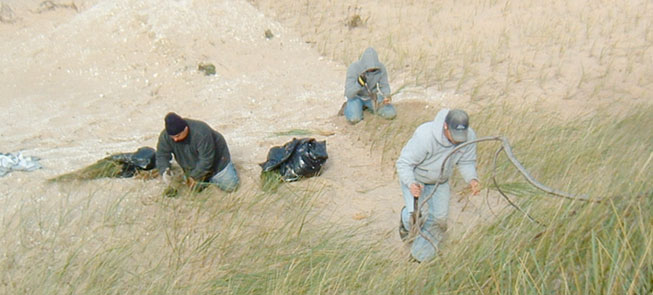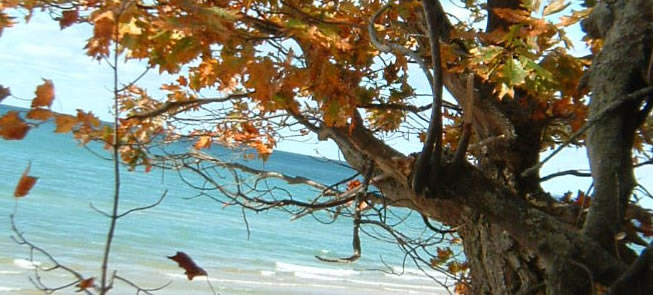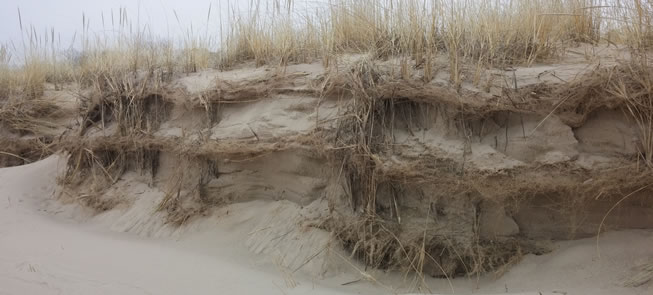I had a close encounter some time ago with some reclusive fellows of the strong silent type. I’m sure you know some people like that. They keep their thoughts to themselves. They rarely speak or let their feelings show with a smile. They usually look like they have a frown. Once you get to know them, they usually indicate their thoughts with subtle clues that take a long time to learn-in fact, maybe only their children can read them.
While working on the beach in the southwest corner of Lake Michigan where the borders of Michigan and Indiana meet I saw a gathering of large, black birds near the water. I quietly walked over to them and found a group of vultures, turkey vultures, feeding on carrion-a two and a half feet long lake trout, that had washed up on the shore during the night.
If you have never seen turkey vultures before, they are very large (turkey sized) black birds with naked, pink, heads and necks; large hooked beaks for tearing flesh and big curved claws on thick toes. “Cute” would not enter into a description of this bird. They have big broad wings designed to ride the wind and the thermals in the countryside and lakeshore with minimal effort. The wings are about five to six feet from tip to tip and one foot in breadth.
These birds are not very rare, but, are very difficult to get close to. Few people, other than birders, are aware of the fact that these birds live in West Michigan. The uninformed take them to be hawks floating in the sky. Their nests are located in remote, nearly inaccessible areas. They are easily distinguished in flight, however, because their wings form an upright “V” shape with the tips slightly curving in towards each other. A hawk or eagle, on the other hand, have a flat, rounded “W” shape when in flight. I have shown my children an old trick to remind yourself of the shape. Place your palms together and touch your elbows together. Now open your hands leaving your wrists touching. The resulting shape looks like a vulture’s wings when in flight. Once I learned that trick, I’ve found that there are many more turkey vultures in the area than I would have guessed. In fact, I see them almost weekly during the summer. I have only been close to them twice in my life. The time I am describing, and, thirty years ago I surprised five of them feeding on a dead rabbit in the back of my father’s blueberry farm.
I have a friend in Northern Ireland who keeps a “hooded vulture” along with nearly forty birds of prey including hawks, eagles and owls. He claims that the vulture is the smartest of them all. In fact it can remember where food is that has been hidden by a dish. It will flip the dish over to get at the food. In classrooms, the bird will shuffle around the room picking food out of the children’s fingers without hurting them.
The wind was blowing stiffly inland from the lake. Eight large black shapes rose from behind some tall, ragged, white pines standing like sentinels along the top edge of the dune. They floated silently over to the dead fish, their wings set into the wind, floating, not flapping. I quietly and slowly walked forward. I knelt behind the dead fish. These great birds hovered in midair scarcely flapping their broad wings fifteen feet away. Two of them advanced toward the fish and landed on the ground in front of me. I can’t resist naming them “Hook” and “Buggy”. They stood very upright over two feet tall. Their “shoulders” were hunched up and their bald heads were set down between them.
They waddled along a few steps and stood still, looking at me, slowly blinking. There they stood, waiting. Waiting. Waiting. I hardly dared to breathe. Their brothers were floating silently overhead, their motionless wings were soundless. I wanted to say ” Hi guys, how are you doing!” It remained dead silent. Then, I moved, (I guess they won the stare down.) to see if I could startle them.
It took quite a bit of movement on my part to get them to spread their wings and lift off the ground, They slowly rose off the ground without flapping. When I retreated, they all settled in for the feast watching me warily.
This “gathering” of these fine fellows was unlike any other birds I have met. They did not flutter about and chatter like blue jays and chickadees. They were more like a solemn group of black robbed undertakers quietly going about their grizzly business. I left them there. I didn’t have the heart to break up their feast again. I have never forgotten the visit.
The church, like the world of birds, is made up of many different kinds of saints. Some are like cheerful chirping sparrows. Others are like wise old owls. The saints in church range from clucking, brightly colored old hens to somber silent types who quietly take care of business unruffled by the activities of the rest of the flock. Maybe those silent types have bald heads too.
Do you appreciate the colorful variety of the bird kingdom? I find it interesting that we can thrill to the endless variations of the creation while showing intolerance for fellow saints who are different than we are. Imagine that we can mock or show irritation and distrust of a member of the body of Christ. Sometimes their behavior, color or family history sets us off. Then we talk about it in our homes and with our friends. All this can be directed toward a brother for whom Christ shed His blood on the cross. What a shame! We all sin. Shouldn’t our attitude be one of tolerance, kindness and forgiveness toward each other? Do you have the same appreciation for the wide variety of characters in your fellow saints?
After meeting my “silent friends” I am convinced the Lord of heaven and earth delights in the comical diversity of His creatures. If I think about it, that is true of my spiritual friends, too.
What kind of a bird are you?
Deane Wassink
2/1/02





